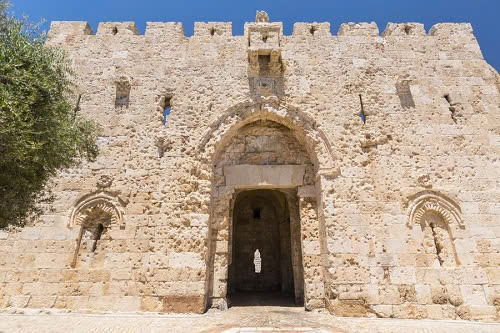In the heart of Jerusalem’s Old City, where stone walls whisper centuries of stories, Zion Gate stands as a testament to human resilience, architectural brilliance, and historical complexity. More than just an entrance, this remarkable gateway offers a living narrative of a city that has endured, survived, and transformed through millennia.
The Origins of a Fortress

Constructed in 1540 by Sultan Suleiman the Magnificent, Zion Gate emerged from a grand vision of fortification. Strategically positioned in the southwestern corner of the Old City, the gate was not merely an architectural achievement but a sophisticated defensive mechanism designed to protect one of the world’s most contested territories.
A Masterpiece of Military Engineering
The gate’s most ingenious feature is its distinctive “L”-shaped passage—a brilliant defensive strategy that challenged potential invaders. By forcing entrants to navigate a right-angled corridor, the design dramatically reduced the effectiveness of attacking forces. Arrow slits integrated into the stonework and a balcony designed for pouring boiling oil transformed the gate into a formidable defensive structure.
A Crossroads of Spiritual Significance

Beyond its military purpose, Zion Gate serves as a spiritual threshold. Located adjacent to Mount Zion, it provides access to profoundly sacred sites like King David’s Tomb and the Cenacle—the traditional site of the Last Supper. Here, the gate transcends its physical boundaries, becoming a symbolic portal connecting different religious traditions.
Scars of Conflict, Symbols of Resilience

The gate bears visible wounds from historical conflicts, most notably the 1948 Arab-Israeli War. Bullet holes punctuate its ancient stones, silent witnesses to the city’s turbulent past. Yet, these marks do not signify defeat but resilience—a powerful reminder of Jerusalem’s ability to endure and rebuild.
A Modern-Day Gateway
Today, Zion Gate welcomes tourists and locals alike, bridging historical epochs and cultural narratives. Its weathered stones connect the Armenian and Jewish Quarters, inviting visitors to walk through a living museum where every step resonates with historical significance.
An Eternal Narrative

As travelers pass through Zion Gate, they are not simply entering a physical space but stepping into a continuous narrative. Each footfall echoes with the stories of empires, religions, and generations who have called this remarkable city home.
Zion Gate remains more than a historical landmark—it is a profound symbol of human endurance, a threshold between past and present, inviting all who enter to become part of Jerusalem’s ongoing story.

